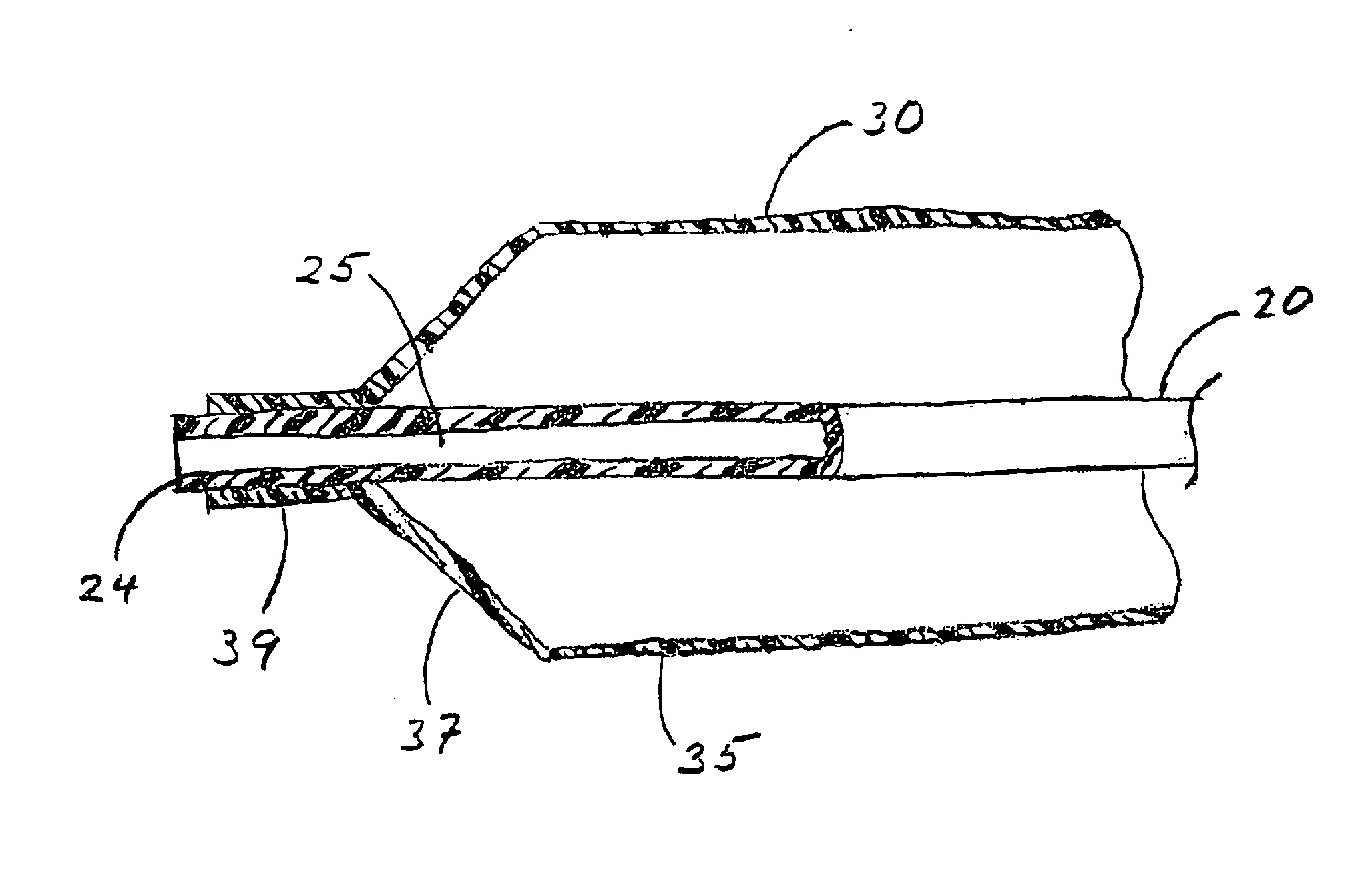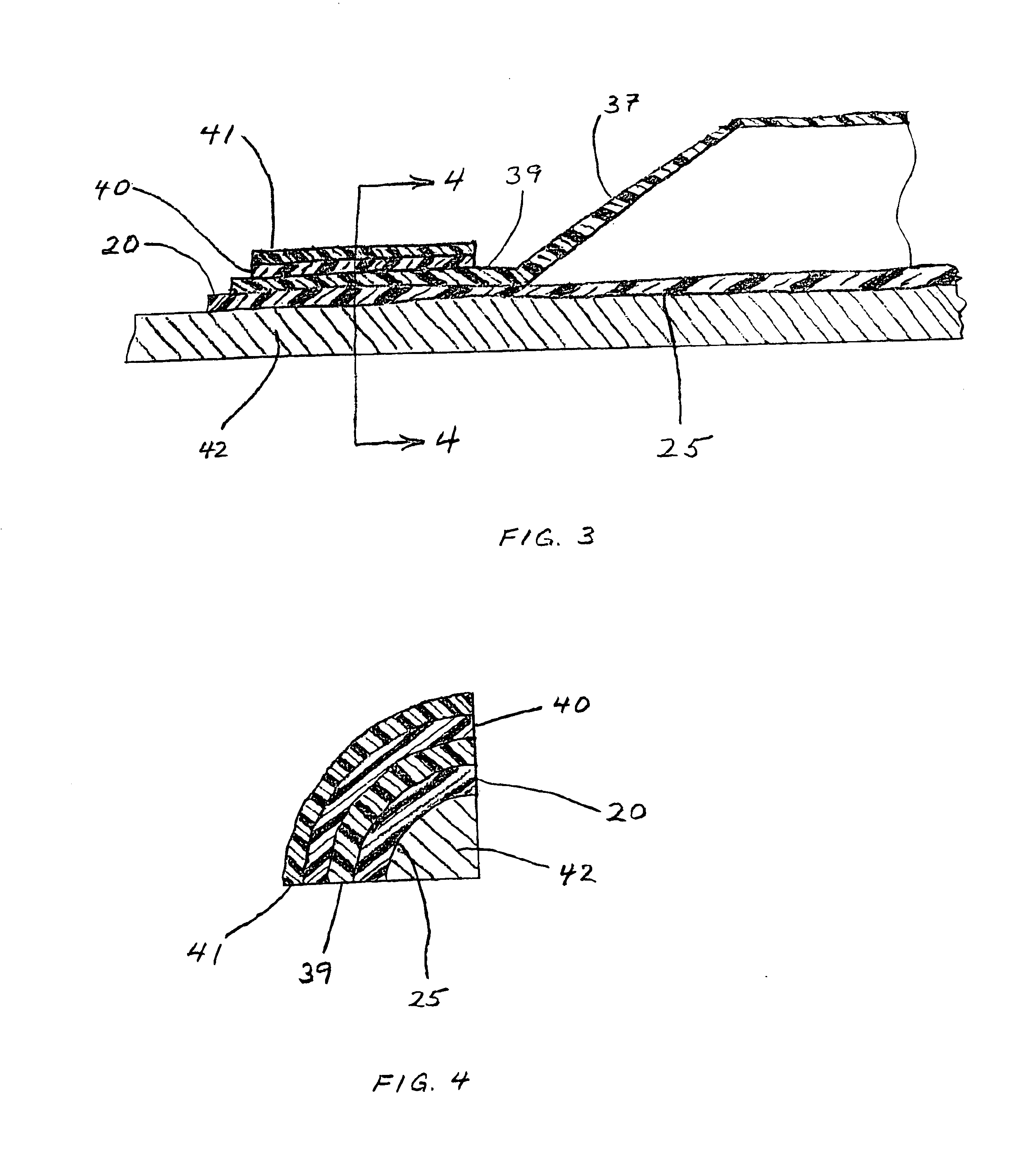Through-transmission welding of catheter components
a technology of transmission welding and components, applied in the direction of dilators, catheters, other domestic objects, etc., can solve the problems of loss of desirable molecular orientation, reduced catheter tracking ability through tight bends, and ultra-thin necks are especially susceptible to thermal damage, and achieve good control of hea
- Summary
- Abstract
- Description
- Claims
- Application Information
AI Technical Summary
Benefits of technology
Problems solved by technology
Method used
Image
Examples
Embodiment Construction
The following description will be specifically provided in the context of coronary angioplasty dilatation catheters, the invention is not so limited and is applicable to other catheter assemblies and procedures. For example, it will be understood that the present invention also applies to balloon catheters used for peripheral angioplasty, drug delivery, stent delivery and the like.
FIGS. 1 and 2 show the distal portion of balloon angioplasty catheter 10. The balloon catheter comprises an elongated, flexible catheter shaft 20 having a proximal end 22 and a distal end 24. A balloon member 30 is disposed near distal end 24 of catheter shaft 20. Balloon 30 comprises generally cylindrical dilating portion 35 having conical ends 37 tapering to shorter, smaller diameter, cylindrical necks 39 that fit closely around the distal portion of catheter shaft 20 where they are attached. Balloon 30 may be inflated and deflated through a lumen formed in the catheter shaft, which passageway is not sho...
PUM
| Property | Measurement | Unit |
|---|---|---|
| wavelength | aaaaa | aaaaa |
| wavelength | aaaaa | aaaaa |
| size | aaaaa | aaaaa |
Abstract
Description
Claims
Application Information
 Login to View More
Login to View More - R&D
- Intellectual Property
- Life Sciences
- Materials
- Tech Scout
- Unparalleled Data Quality
- Higher Quality Content
- 60% Fewer Hallucinations
Browse by: Latest US Patents, China's latest patents, Technical Efficacy Thesaurus, Application Domain, Technology Topic, Popular Technical Reports.
© 2025 PatSnap. All rights reserved.Legal|Privacy policy|Modern Slavery Act Transparency Statement|Sitemap|About US| Contact US: help@patsnap.com



